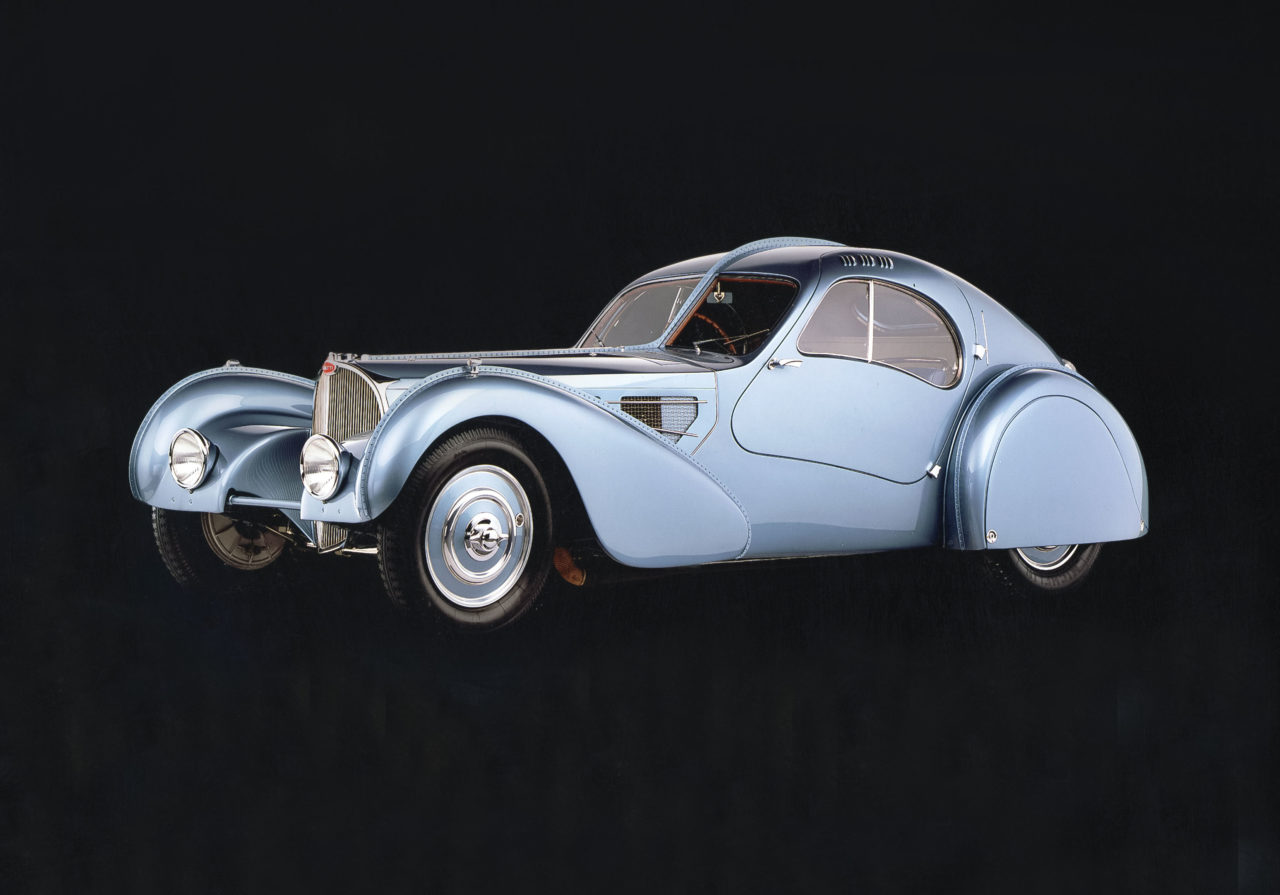Jim Stranberg – Million Dollar Grease Monkey
By Dan England
Many years ago, the phone in Jim Stranberg’s unassuming Loveland auto repair shop rang with a call from a guy who spotted some potential treasure on eBay: The parts to a vintage Bugatti car.
The man probably got Stranberg’s name from someone. Stranberg is about as well-known in that network as anyone. He restored the Bugatti Atlantic, a one-of-a-kind car that is probably the most valuable in the world. Stranberg is maybe one of a half-dozen or so people in the U.S., at least who he knows, who can work on vintage Bugattis.
The parts cost $50,000, the man said, and if someone could just put those together, he’d have a car worth hundreds of thousands of dollars. But Stranberg had to be honest: It would take him at least 5,000 hours to do the job, and he charges $100 an hour (“so figure it out,” he says now). At best, the man would break even on the car, even if he did get full value for it. You could almost hear the man’s bubble pop over the line.

Jim and Sharon Stranberg
Stranberg then asked the guy a question: Would he be offended if he bought it?
The result sits in a parking spot at his shop, Stranberg’s Vintage Autos. The car took him 10 years to build. It is not the most valuable car in the world, but a half million is probably not out of the question. He’s taken his wife, Sharon, on several cross-country driving trips, but he doesn’t use it to tool around town.
“I keep asking her if she wants to add up the cost for it,” Stranberg says, “but she declines.”
Bugattis weren’t meant to be Datsuns. They were specialized race cars that peaked in the 1920s, and so not many were made (most believe around 2,000 remain from the original 8,000 built from 1915-50). Back in the 1920s, it was the car to beat, Stranberg says.
They are now, of course, collector’s items, and as such, people (many of them rich, and many of them men) who adore cars lust after them. That lust is what drives any collector’s market. It’s also how he got his start with Bugattis.
Stranberg was a sports car mechanic in the early ‘70s working in Boulder when his boss, Bob Seiffert, decided he wanted to own a Bugatti. There was a guy in California who had the parts, and he asked his crew if one wouldn’t mind moving there to put it together.
“I was the only one who raised my hand,” he says. “I was tired of Volkswagons. I was footloose and fancy free.”
He never finished that car, but he was introduced to the small world by working under others such as Overton “Bunny” Phillips, a race car driver and, at the time, the world’s most famous authority on Bugattis. As you’ve guessed by now, Bugattis are unique. The cars have a lot of gears that need to be in an exact spot, Stranberg says, and moving them even a tiny bit can mess everything up, and to make things worse, the battery is made of aluminum, which expands when it gets hot. He has a manual, in French, but experience is the only real way to know how everything works and how to get the parts to them.

Jim and Sharon’s 1931 Bugatti Type 40 A Roadster, on display at the 2021 Radnor Hunt Concours d’Elegance in Malvern, Penn.
“I thought I’d go out there and in three months know everything there is to know about them,” Stranberg says, “Fifty years later I still don’t know everything. There are a lot of specifics that may not be true for other cars, and they aren’t obvious.”
He went out on his own after a few years, and eventually he came back to Colorado because he loves it out here. He’d earned a name by then, and his reputation was crucial for his membership into that elite network of Bugatti experts. He restored and repaired cars—even at age 83, he still repairs them but doesn’t rebuild any longer—and if he had a question, there was always someone he could call. He relied on the network for parts as well.
When he rebuilt the cars, he used as many original parts as he could. Garages were full of them and they could be pried away with his bargaining skills (“how is that part doing you any good sitting in your garage,” he would say). If he couldn’t, he knew people who could make them to exact specifications.
Those exacting standards help him land jobs with some of the most famous car collectors in the country, including Jay Leno, the former “Tonight Show” host. His favorite restoration job was the 1936 Bugatti Type 57 SC Atlantic. He knew the Atlantic’s owner, Dr. Peter Williamson, was also owner of the greatest collection of Bugattis in the world.
Basically, as he puts it, he got a name enough for these folks to trust him with their prize possessions, and then he did a good job. The Atlantic would be his masterpiece.
Williamson bought the car in 1971 and paid $59,000 for it, a world record for a car sold at an auction (Cadillacs cost $6,000 back then). He used the car for many years before sending it to Stranberg for restoration.
It was a huge job. There are two models left in the world (Ralph Lauren owns the other). Stranberg’s goal, as it always was, was to make it as original as possible using parts from the era (90 percent of the car is indeed original now). When he finished it, he was rewarded with his profession’s highest honor: In 2003, it won Best of Show at the Pebble Beach Concours d’Elegance, the world’s most prestigious car show.
Williamson died in 2008. Peter Mullin and Rob Walton purchased the car for more than $30 million at an auction in 2010. It now sits in the Mullin Automotive Museum in Oxnard, Calif. The car is on Stranberg’s business card.
“A nice replica will run you $1 million.” Stranberg says, “But then it’s just a replica.”
Stranberg isn’t sure if it’s still the most valuable car in the world—“it’s one of them,” he says—and quite frankly he doesn’t care all that much. It was a fun job, but he’s got other jobs to do and still works from 10 a.m.-4 p.m. six days a week in his shop, even though he considers himself retired.
He’s had his own car since 2010. He’s taken several trips across Europe and the U.S., planned by Sharon, a former travel agent, and the two are looking forward to another one through Canada in 2023. They may not do much after that. They are getting up there in years.
He thinks about that phone call he received many years ago, the one that gave him a chance to build the one that he now owns and has enjoyed on trips across the world. The man who called him wanted to make a quick buck. That wasn’t Stranberg’s goal.
“I wanted a Bugatti for my own,” he says.







